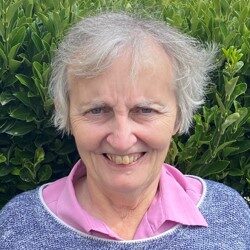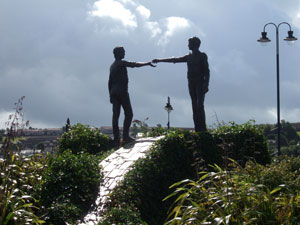
On 22nd July, 1848, six Sisters of Mercy from Tullamore and one Postulant reached the banks of the Foyle, after a week’s journey by stage coach from Dublin. They had been invited to Derry by Bishop Edward McGinn, who had heard about the excellent work being done by Catherine McAuley and her companions in other parts of the country.
 View of Derry from the Waterside
View of Derry from the Waterside
The Sisters took up residence in Pump Street in what had formerly been the King’s Arms Hotel, within the walled city of Derry. This was the first community of religious women in the North West of Ireland since the Plantation of Ulster in the seventeenth century.
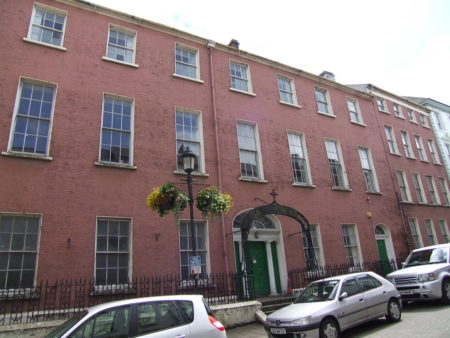
Convent of Mercy, Pump Street, Derry
Sister Mary Ann Doyle, the Co-Foundress of the Congregation, was one of that initial group of Sisters who arrived in Derry, a city that was recovering from a severe famine which had decimated the entire country. She is one of the sixty-six Sisters buried in a vault in the grounds of the Long Tower Church.
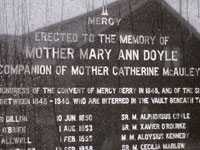
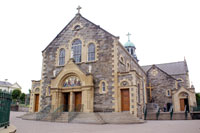 St. Columba’s Church, Long Tower, Derry
St. Columba’s Church, Long Tower, Derry
The Long Tower Church stands on the site of the first church built by St. Columba (Columcille), the Dubh Regles or Black Abbey. This present church was re-built in 1909.
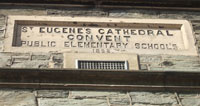
Believing in the potential of education to empower and liberate, Sisters started classes in St. Peter’s Pump Street, just after their arrival in Derry in 1848. They moved to the ‘Brow of the Hill’ in 1850, having been offered four classrooms in what was then a preparatory seminary.
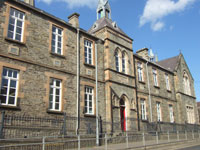 St. Eugene’s Senior School, Francis Street
St. Eugene’s Senior School, Francis Street
Such was the overcrowding there that in 1854, at the request of Bishop Kelly, Sisters exchanged this location with the Christian Brothers. They moved to St. Eugene’s School, a recently built parish school in the grounds of St. Eugene’s Cathedral.
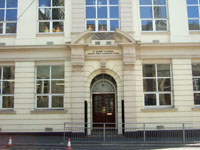 St. Eugene’s Infant School, Derry
St. Eugene’s Infant School, Derry
The school continued to expand and in 1914 the Infants’ School was erected across the road on Francis Street.
Until the Compulsory Education Act of 1880, Sisters provided evening classes for those children employed in labour during the day, and who were deprived of the rudiments of education. With the passing of the Act in 1880, Sisters were able to change the Evening School schedule to offer programmes for adult women such as lace-making, embroidery and home economics.


Over the years, Sisters took responsibility for the running of a number of schools:
• St. Columba’s Infant School, Long Tower (1876 – 1985): this is the oldest Catholic school in the city having been built in 1825. The building is now being refurbished and, on completion, will house the ‘Áras Colmcille Project’, dedicated to Colmcille, the founding father of the City.
• St. Patrick’s Elementary School, Bridge Street (1885 – 1932), the Foyleside Shopping Centre now stands on this site of this former school.
• St. Joseph’s Elementary School, Artillery Street(1932 – 1975): this was opened in 1911, as an extension to the Ardscoil where secondary education was provided for girls. St. Joseph’s became an Elementary School in 1932 when the Ardscoil moved to Thornhill. In 1992, Pauline Ross developed this building as a Playhouse. Since then, it has grown to become one of Ireland’s leading award winning multi-disciplinary Community Art Resource Centres.
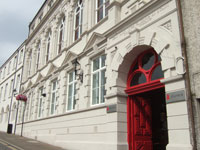
St. Patrick’s Primary School, Pennyburn, opened in 1954 and was recently rebuilt.
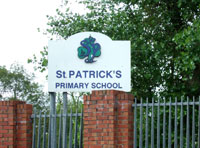
All of the above mentioned schools, with the exception of St. Joseph’s, were parish owned.
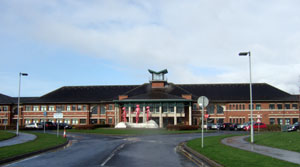
Thornhill College has changed location once more, in more recent times, with the opening of the new school in 2003, on the opposite side of the Culmore Road from the original building.
The Education Act of 1948, opened the possibility of secondary education to all young people, at age eleven. From the beginning (1848) however, due to demand and the generosity of Derry families, secondary education for girls had been offered in St. Peter’s, Pump Street. With increasing numbers, the school relocated to St. Mary’s Ardscoil in 1887. St. Mary’s provided for boarders and it also had a preparatory department for younger boys and girls. With the acquisition of a site at Thornhill, three miles north of the city, in 1932, the secondary school relocated there.
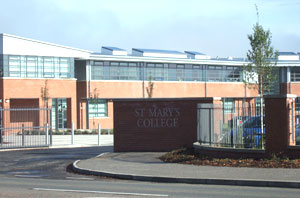
Renamed St. Mary’s College, the school has relocated in 2010 to the Northland Road, Derry.
The first Secondary Intermediate School in Derry was St. Mary’s in Creggan and it opened in 1959. The Bishop, Dr. Farren, asked the Sisters to take responsibility for this new venture in education. At the official opening of the school, Bishop Farren said that Derry could never repay the Sisters of Mercy for the great work they had done for education over the previous hundred years, in many days of difficulty and trial. Sisters continued in the school until 1991.
From the 1960’s onwards, many changes came about which influenced the lifestyle and ministry of the Sisters. Many new agencies were set up in Derry to improve the living conditions of people. Various voluntary organisations came into existence to address the needs of those who were poor and underprivileged. The recommendations of Vatican II (1962 – 1965) offered a particular challenge to the Sisters to revisit the life and witness of their Foundress, Catherine McAuley, in the light of the realities of a different time. In addition, the ‘Troubles’ in Northern Ireland (1969 – 1998) brought their own particular difficulties and challenges.
A consequence of all of the above was that the location and ministry of the Sisters changed to take account of new realities. Sisters are now located in a number of parishes and their ministry takes a variety of forms.


